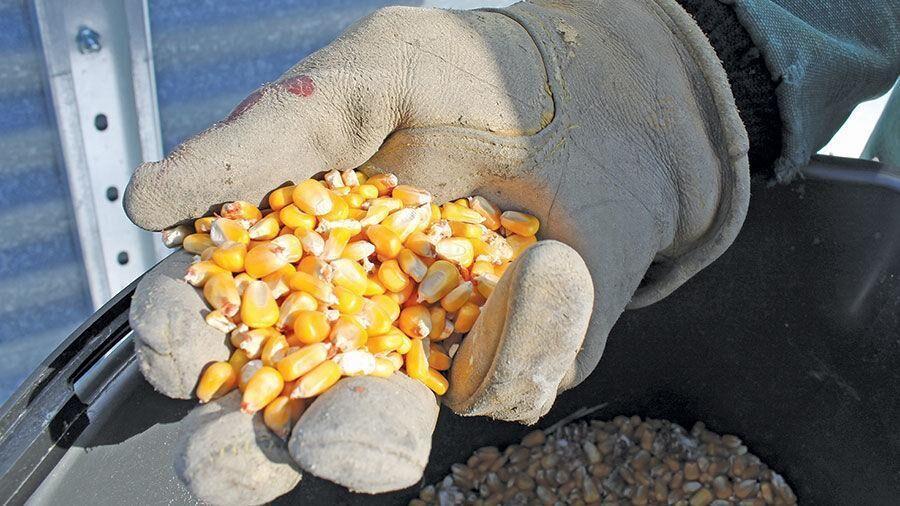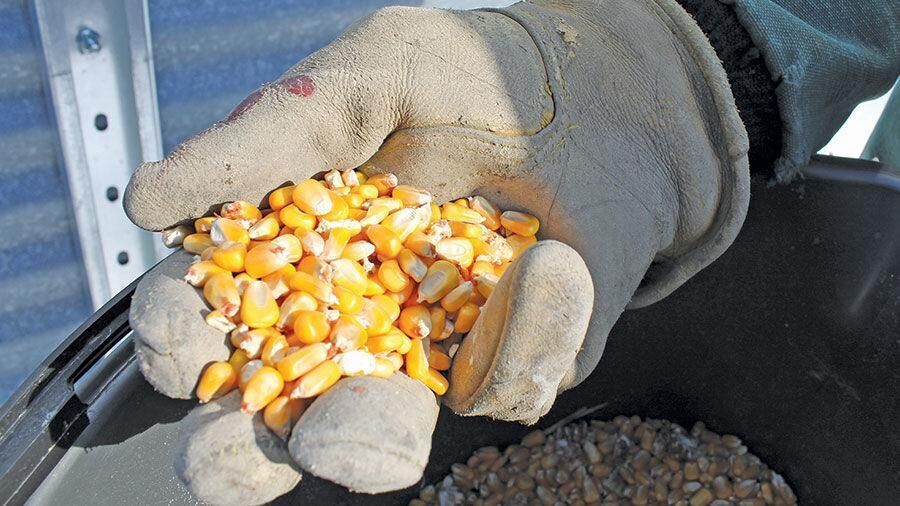

The corn market is keeping a close watch on Chinese buying, ethanol demand and harvest/planting conditions in South America.
It’s a somewhat slow, yet busy time for the corn market these days. While the market, like other commodities, is anxiously waiting in anticipation of the March 31 prospective plantings report, it is also keeping a close watch on Chinese buying, ethanol demand and harvest/planting conditions in South America.
While the corn and soybean markets are linked in some ways, the corn market is different than soybeans in that corn doesn’t have quite as tight of a supply situation, according to Frayne Olson, grain marketing economist at North Dakota State University.
“The big surprise in corn has been the exports into China. We’re also watching the ethanol industry very closely,” Olson said.
“As corn prices have come up, ethanol prices have also come up to try and maintain at least some profitability in the ethanol sector,” he continued, adding that he doesn’t expect any major shutdowns of ethanol plants and that he feels the “ethanol folks” will continue to produce ethanol.
But given the fact that the country, and the world, is still dealing with the coronavirus pandemic, the real question in Olson’s mind is: how many gallons do we really need? Many people are still working from home, people are not driving as many miles, and gasoline consumption is not as strong as it was before COVID. But things are beginning to change as people are getting vaccinated and some states are starting to open up their economies.
“I think by mid- to late summer we’ll see more driving because people are going on vacations,” he said. “Is that really enough to make a big difference in our bottom line for corn availability? I don’t know.”
Olson said he’s watching the ethanol market and how much gasoline we’re consuming in the U.S. The U.S. Department of Energy releases monthly reports on that information.
Looking at China, Olson said that seasonally they tend to slow down their purchases of corn during the summer months, but it doesn't go to zero.
“It’s not like the soybean market in which China drops off quickly. For corn, it’s not as dramatic a shift,” he said. “They don’t buy as much corn from the U.S. during the summer months as they do during the fall and winter, but I do expect to see continued sales.”
Olson said there is definitely a demand base for feed grains in China because when you look at corn purchases, from the U.S. specifically, and other feed grains, you see that they’re purchasing feed barley and wheat off the global market and they’re using a lot of their lower quality domestic wheat as a feed source. There have also been some reports of low quality rice being used as a feed source.
“So the demand base is there, and it’s not just the oilseeds and the meal, it’s also on the grain side,” he said. “Again, the big unknown, and I really wish I knew what the answer was to this, is how aggressively will China continue to buy U.S. corn? The Brazilian first crop of corn will be harvested in another month, so they’ll have some new crop corn supplies out of Brazil. Argentina also exports corn, but their corn yields are going to be a bit lower than normal, so I think there’s some uncertainty there.”
The new crop corn situation, he noted, is a very similar story to soybeans in that there will be strong competition for acres this spring. Although some say they will “battle for acres,” he likes use the term “balance for acres” because he believes there’s enough acres to go around.
“What is that balance? How many acres of corn versus beans are we going to get?” he asked.
March 31, when USDA releases the 2021 prospective plantings report, is going to be extremely important for the corn market because that’s the next big piece of information about what new crop corn might look like.
Another thing Olson is trying to do is to help people understand the issues, for instance, the situation in South America. He explained that Brazil has two corn crops. The first crop in Brazil is planted and harvested at the same time as soybeans. That corn is primarily in central and southern areas of Brazil. But the second crop corn, the safrinha corn crop, is the larger of the two and is planted in the north. A lot of those bushels from the second crop in the north are used for domestic consumption and for their own livestock sector because they have a big beef sector, as well as pork, poultry and dairy. But, as you get in the central and southern parts of the country, some of that corn does get exported, too.
“Here’s the point: The corn exports out of Brazil have a longer window because they have these two crops of corn that can be planted and harvested,” Olson explained. “Now, the northern crop corn in Mato Grosso, which is the big soybean producing state, is delayed because the soybean planting last spring in Mato Grosso was slowed because it was so dry. And now harvest progress has been really slow because it has been too wet. Well, if you can’t get the soybeans off and you can’t plant the corn, and now corn planting is behind pretty substantially, then you’re behind to the point where some of those acres may not get seeded as it’s getting too late.”
It’s kind of a puzzle and all the pieces of the puzzle haven’t been figured out yet, so the big question is: just exactly how many acres of this second crop corn are going to get seeded?
“The reason that is important is because domestically they don't want to over-export the corn they’re going to be harvesting in a couple weeks,” he said. “Here’s the point: If you have a big second crop coming, you can export the first crop really heavily and still have plenty of corn around for the domestic market. But if that second crop is smaller than expected, that means you’ve got to be really careful not to export too much of your first crop because then you might run short.”
This is important in the global corn market because the U.S. is the biggest corn exporter and then it’s Brazil and then Argentina when it comes to corn exports by volume.
Going forward, Olson said there are a number of questions looming. How long will these large purchases of corn be coming from China? Some of that is not only what the demand base for China is, but also where else can they go to get corn?
“I wish I had a more clean picture of the outlook, but there’s a lot of things happening right now that are causing corn and soybeans to be a little bit nervous and saying, ‘Well, we’ll be watching this and watching it closely’,” he said.
“The margin for error in soybeans is so tight that we’re going to see a lot more price volatility. We’re going to see that bouncing around in the corn market, too, but our margin for error in corn isn’t as tight because we have more supplies available from last year,” he concluded.
Looking at local prices, at one local elevator in west central Minnesota regularly followed in this column, as of March 15, the March cash price for corn was $5.17 per bushel and basis was -32 cents under. The September 2021 futures price was listed at $4.98 and the basis was +2 cents over.
March 20, 2021 at 12:44AM
https://ift.tt/38ZL5QD
Corn market watching China, ethanol and more - Rapid City Journal
https://ift.tt/3gguREe
Corn

No comments:
Post a Comment